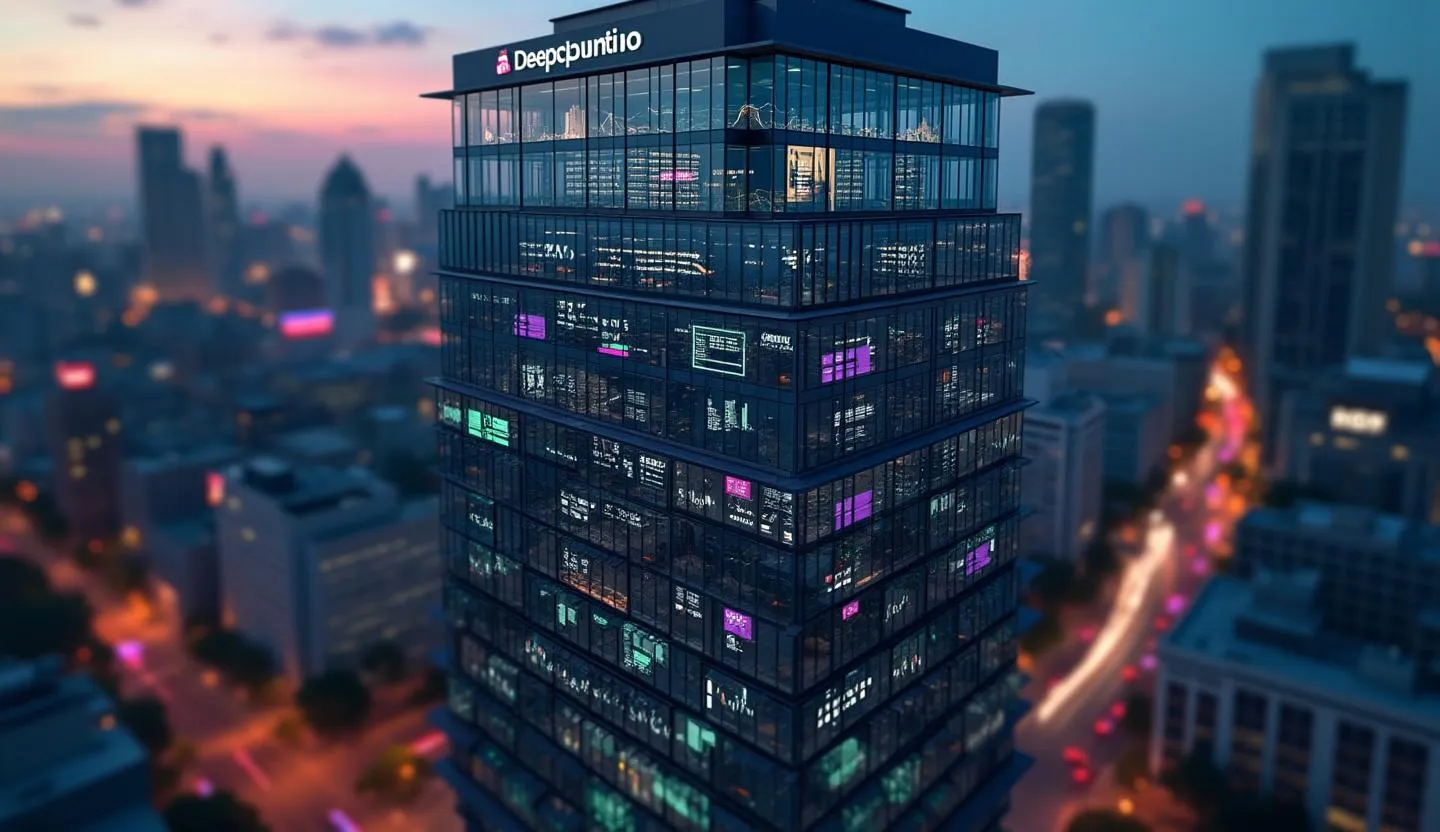Citigroup's shift to Neutral on Schrodinger signals a nuanced outlook—here’s what sophisticated investors need to know about the risk/reward profile now.
Schrodinger, Inc. (SDGR) sits at the intersection of computational physics, AI, and drug discovery. The company’s proprietary platform leverages advanced molecular simulations and machine learning to accelerate drug development for both internal and partnered pipelines, straddling the life sciences and technology sectors. On August 15, 2025, Citigroup—a heavyweight in Wall Street research—downgraded Schrodinger from Buy to Neutral while setting a $20 price target. The call comes amid volatility and mixed signals in recent financial and clinical news, raising the stakes for investors keen to decipher whether this is a pause or a turning point for the stock.
Analyst upgrades and downgrades are critical for investors: they reflect deep, data-driven reevaluations by experts with privileged access and sector knowledge. A downgrade from a global institution like Citigroup, especially after a period of high expectations, carries significant weight—often prompting a reassessment of both short-term sentiment and the long-term thesis.
Key Takeaways
Potential Upside: With shares at $18.86 and Citigroup’s target at $20, the implied upside is just over 6%, reflecting muted expectations for near-term appreciation.
Stock Price Action: Shares are down 3% today and have faced pressure recently, with the RSI at 24.5 (deeply oversold territory), hinting at some technical exhaustion after heavy selling.
Major News: Recent headlines include the discontinuation of Schrodinger’s SGR-2921 clinical program and mixed Q2 earnings (a narrower loss but ongoing operational challenges).
Volume Spike: The highest trading volume of the year occurred yesterday—hinting at institutional repositioning post-news and ahead of the downgrade.
Analyst Confidence: Citigroup's downgrade reflects a pragmatic, data-driven reassessment consistent with their broad sector coverage and historical rigor.
Citigroup’s Downgrade: What Lies Beneath the “Neutral” Call?
Analyst Firm Background and the Weight of a Downgrade
Citigroup is one of the world’s largest and most influential investment banks, known for its extensive research resources and deep sector expertise—particularly in healthcare and disruptive technologies. When Citi pivots from Buy to Neutral, it’s rarely a knee-jerk reaction: this signals a comprehensive re-evaluation in the face of new data, shifting fundamentals, or changing industry tides.
Their new $20 price target sits just above current levels, suggesting that while Schrodinger’s underlying platform and partnership model remain valuable, the near-term risk/reward is now balanced. This recalibration—especially after periods of high volatility and news flow—reflects Citi’s cautious but not bearish stance. It’s a signal to investors that the easy gains may be behind us for now, and that the next leg will depend on fresh catalysts or strategic pivots.
“Citigroup’s downgrade is a wake-up call for those expecting a quick rebound. It’s not a call to abandon ship—but a warning to temper expectations and watch for evidence of operational and clinical traction before getting aggressive.” Deepstreet
Parsing Schrodinger’s Business Model in Context
Schrodinger’s platform enables pharmaceutical and biotech partners to virtually screen and optimize compounds, aiming to cut R&D costs and timelines. Revenue comes from software licensing, collaborative drug discovery, and milestone payments—making it a hybrid tech/biotech play. The addressable market is enormous, but success hinges on both technological adoption and clinical proof of concept.
Recent news has been a double-edged sword:
The discontinuation of SGR-2921 (their CDC7 inhibitor program) removes a near-term clinical catalyst, potentially weighing on sentiment and future milestone revenues.
Q2 earnings showed a net loss of $0.59 per share—better than expected, but the company remains unprofitable.
Management continues to tout the promise of their computational platform, but investors are waiting for more tangible, late-stage clinical or commercial wins.
Stock Performance: A Year of Volatility and Heavy Rotation
Over the past twelve months, SDGR has traded between $16.60 and $28.47, with an average daily volume near 98,000 shares and pronounced volatility. The technical backdrop is notable:
Recent price: $18.86, off from a recent high of $19.45.
RSI: At 24.5, the stock is oversold—often a contrarian buy signal, but only if fundamental catalysts emerge.
Bollinger Bands: Price is hugging the lower band, suggesting the possibility of a technical bounce, but fundamentals must improve.
Volume: A spike to 4.4 million shares traded on August 14th (the highest all year) indicates major repositioning—likely in response to news and ahead of Citigroup’s call.
In short, the stock’s recent technicals and trading patterns suggest capitulation—but not necessarily a reversal unless new positive drivers materialize.
Potential Upside: The New Reality
With Citi’s price target at $20 and the stock at $18.86, the implied upside is just over 6%. For context, this is a fraction of the potential returns seen during Schrodinger’s more speculative phases. The muted target suggests that, absent a major pipeline win or a new transformative partnership, expectations for near-term appreciation should be modest.
For investors, this means:
The risk/reward is now balanced, not skewed to the upside.
Further downside is possible if operational execution or market sentiment deteriorates.
Technical indicators suggest the stock could bounce, but fundamentals need to catch up.
Recent News: The Clinical Setback and Mixed Financials
The most impactful recent headline is the discontinuation of SGR-2921, which was in Phase 1 for acute myeloid leukemia and high-risk myelodysplastic syndromes. While early activity was observed, “two emergent events” led management to pull the plug—a prudent move, but one that reduces near-term optionality and raises questions about the depth of the clinical pipeline.
Q2 results, reported August 6th, were a mixed bag:
Loss per share was $0.59 (narrower than consensus, but still a loss).
Revenue came in ahead of expectations, but investor focus remains on the path to profitability and pipeline validation.
The earnings call featured cautious optimism but few concrete new catalysts.
“Despite early promise in our SGR-2921 study, safety signals and emergent events forced a strategic reassessment. We remain committed to advancing our platform and pipeline,” said CEO Ramy Farid on the earnings call. (Seeking Alpha)
Volume and Volatility: Is the Shakeout Over?
The August 14th surge in trading volume suggests institutional investors were repositioning aggressively—likely unwinding positions in light of the clinical news and bracing for analyst reactions. With the RSI so low and technicals stretched, a relief rally is possible, but meaningful upside will require fresh news or outperformance.
Conclusion: Reset, Not Reversal—A Stock to Watch, Not to Chase
Citigroup’s downgrade of Schrodinger is significant because it reflects a disciplined, data-intensive reassessment by a major research house. The muted upside target and Neutral rating indicate that, while Schrodinger’s long-term platform story remains intact, the near-term is now about execution and patience.
For investors, the message is clear:
Respect the technical exhaustion and volume shakeout, but don’t ignore the loss of near-term catalysts.
The risk/reward is now balanced—making SDGR more of a watchlist candidate than a core holding until new data emerges.
Monitor for updates on pipeline progress, new partnerships, or inflections in software revenue as potential triggers for the next leg.
In the world of AI-enabled drug discovery, the path to value is rarely linear. Citigroup’s downgrade is not a death knell, but a reminder that even the most promising platforms must deliver—both in the clinic and on the balance sheet—to reignite investor enthusiasm.

.svg)
.svg)
.svg)
.svg)

.svg)

.svg)
















